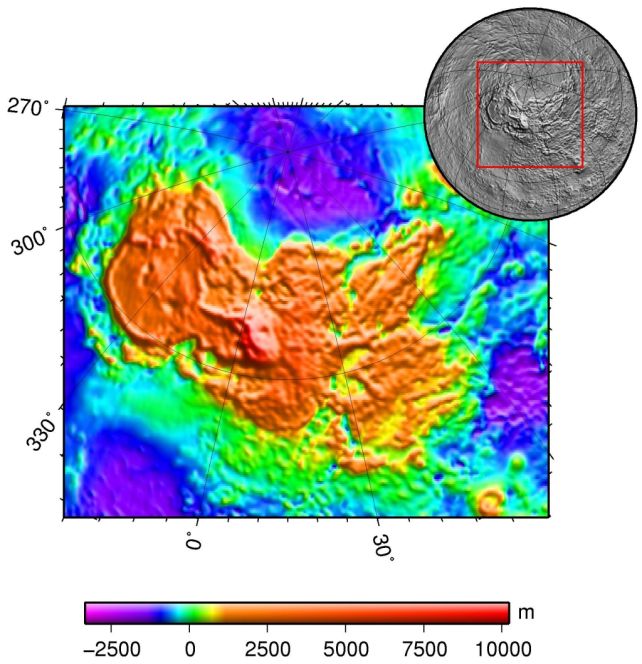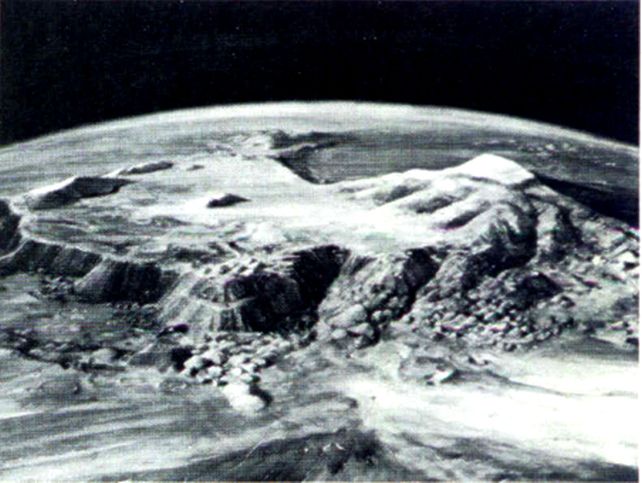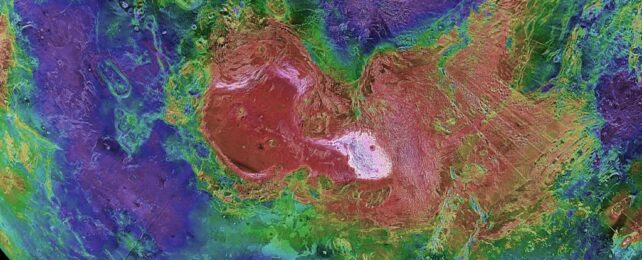Venus and Earth seem like twins who, through dramatically different circumstances and choices, ended up leading dramatically different lives.
Earth is bountiful and welcoming, with a soft, safe atmosphere, sloshing oceans, forgiving temperatures, and land masses carpeted with growth. Venus is choked by clouds of toxic gas, rains acid, has crushing atmospheric pressure, and burns with temperatures more befitting Dante's inferno, in the hundreds of degrees.
These differences are more than skin deep. Venus lacks our planet's tectonics, including the large, separate areas of planetary crust that grind against each other and help maintain a stable climate here on Earth, and in which the continental land masses are embedded.
The lack of tectonic plates on Venus is thought to be a pretty powerful contributing factor to many of the other differences between the planets, but we don't really know how Venus' geological past unfolded. The oldest parts of the planet's surface, the vast plateaus known as tesserae, seem to have tectonic features, but how they emerged has been something of a mystery.

Well, now scientists have found something that really threw them for a loop. Venus' tesserae may have formed through processes very similar to those that produced Earth's earliest continents, billions of years ago.
"The study challenges our understanding of how planets evolve," says geoscientist Fabio Capitanio of Monash University in Australia. "We did not expect Venus, with its scorching 460 °C (860 °F) surface temperature and lack of plate tectonics, to possess such complex geological features."
Earth's crust is pretty complex compared to that of other planets. It's broken into pieces, and those pieces are loose, able to rub up against each other, slip under each other in a process known as subduction, and slowly rearrange themselves into different configurations.
The very oldest parts of Earth's continental crust are regions known as cratons. The continental tectonic plates are generally weaker than the oceanic plates, but there are regions where the rock is older, denser, and stronger.
These are the cratons; we know of around 35, and scientists believe that they formed first, pushing upwards through Earth's molten interior and hardening, providing seeds around which the continents could find purchase and grow.
Our knowledge of Venus is limited – it's not a planet that invites human exploration – but for 15 years, between 1989 and 1994, NASA's Magellan spacecraft used a radar probe to map, in detail, the surface of Venus, beneath its cloak of sulfuric acid clouds.
Capitanio and his colleagues tapped into this data, focusing on a tesserae region known as the Ishtar Terra, the largest plateau on Venus, using computer simulations to explore the way this region formed, billions of years ago, when the Solar System was still in its early years.

Their results suggest that the tesserae may have formed just like the cratons, surging upwards from within the molten interior of Venus to emerge on the surface and harden into the planetary crust.
"This finding provides a fascinating new perspective on Venus and its potential links to early Earth," Capitanio explains. "The features we found on Venus are strikingly similar to Earth's early continents, suggesting that the dynamics of Venus' past may have been more similar to Earth's than previously thought."
This gives us a clue for understanding planetary evolution: it suggests that, however Earth and Venus diverged along their separate crustal journeys, it happened after the process of craton formation, but before the formation of plate tectonics.
This timing matters, because the when and how different planetary characteristics emerge could be a big clue about how habitability is established and maintained on rocky planets like Earth. The strongest tool we have for this is finding when and where the two planets match up.
"By studying similar features on Venus, we hope to unlock the secrets of Earth's early history," Capitanio says.
The research has been published in Nature Geoscience.
